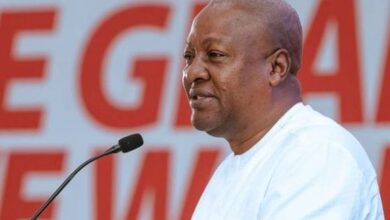Governor of the Bank of Ghana, Dr Ernest Addison has announced that Ghana’s public debt stock increased to 80.1 percent of Gross Domestic Product (GDP), GH¢351.8 billion, at the end of December 2021, compared with 76 percent of GDP, GH¢291.6 billion, at the end of December 2020.
Of the total debt stock, he said, domestic debt was GH¢181.8 billion, 41.4 percent of GDP, while the external debt was GH¢170 billion 38.7 percent of GDP.
Speaking at the Monetary Policy Committee (MPOC) press conference in Accra on Monday March 21, he said “On the domestic front, the rebound in economic activity continued, as reflected in some improvements in the Bank’s updated Composite Index of Economic Activity (CIEA), although at a slower pace than in 2021. The index recorded an annual growth of 4.2 percent in January 2022 compared to 13.9 and 3.4 percent in the corresponding periods of 2021 and 2020. The key drivers of the index during the
period were industrial production, exports, credit to the private sector and air passenger arrivals. Consumption of goods and services, and construction activity, however, slowed down, acting as a drag on the index.
“The Bank’s business and consumer confidence surveys, conducted in February 2022, revealed a softening of sentiments with business confidence declining by a greater extent. While consumer confidence dipped by 0.7 percentage points, business confidence declined by 9.6 percentage points. Consumers were mainly concerned about the persistent increases in fuel prices, increases in transportation fares and rising inflation.
“Businesses, in addition to these factors, were also concerned about the impact of these on macroeconomic conditions and on their short-term targets and profitability for 2022. These survey findings were broadly in line with observed trends in the February 2022 Ghana Purchasing Managers Index (PMI). The Ghana PMI, which is a measure of the rate of inventory accumulation by managers of private sector companies, declined below the 50.0 benchmark on the back of weak output and purchasing activity amidst rising inflation.
“Notwithstanding the sustained growth momentum, rising food prices, upward adjustments in petroleum prices and its effect on transport fares, and exchange rate depreciation pass-through have pushed up inflation to 15.7 percent at the end of February 2022, 5.7 percentage points outside the medium-term target band. Food inflation jumped sharply from 12.8 percent in December 2021 to 17.4 percent
in February 2022, while non-food inflation jumped from 12.5 percent to 14.5 percent over the same period.
“Also, underlying inflationary pressures have increased, signalling broad-based price pressures. The Bank’s core inflation measure (defined to exclude energy and utility prices), increased from 11.8 percent in December 2021 to 13.6 percent in January 2022 and further up to 15.4 percent in February 2022. Similarly, weighted inflation expectations comprising consumers, businesses, and financial sector,
also picked up significantly over the period.
“Provisional data on budget execution for 2021 indicated an overall broad fiscal deficit (cash, excluding financial sector clean-up costs) of 9.7 percent of GDP, against the programmed target of 9.4 percent of GDP. The corresponding primary balance for the period was a deficit of GH¢8.9 billion (2.0 percent of GDP), against a deficit target of GH¢8.7 billion (2.0 percent of GDP). Over the year, total revenue and grants amounted to GH¢67.9 billion (15.4 percent of GDP), below the projected GH¢72.5 billion (16.7 percent of GDP). Total expenditure amounted to GH¢110.4 billion (25.1 percent of GDP), below the programmed target of GH¢113.8 billion (25.9 percent of GDP).
“These developments impacted the stock of public debt which increased to 80.1 percent of GDP (GH¢351.8 billion) at the end of December 2021, compared with 76.0 percent of GDP (GH¢291.6 billion) at the end of December 2020. Of the total debt stock, domestic debt was GH¢181.8 billion (41.4 percent of GDP), while the external debt was GH¢170.0 billion (38.7 percent of GDP). Growth in total liquidity moderated significantly in February 2022, mainly driven by contraction in the Net Foreign Assets of the banking sector, relative to an
expansion in the Net Domestic Assets. Annual growth in broad money supply (M2+) moderated to 17.7 percent in February 2022 compared with 29.1 percent in the corresponding period of 2021. This was reflected in slower growth in currency outside banks and total deposits. Similarly, annual growth in reserve money declined considerably to 21.9 percent from a growth of 34.8 percent, over the
same comparative period.
“Credit to the private sector continued to recover, consistent with the rebound in economic activities. In nominal terms, annual growth in private sector credit increased significantly to 17.1 percent in February 2022 compared with 7.4 percent in the same period of 2021. In real terms, private sector credit grew by 1.2 percent relative to a contraction of 2.7 percent, over the same comparative period.
The latest credit conditions survey revealed tightened credit stance on loans to enterprises. However, demand for credit by households and small and medium sized enterprises are projected to increase in the near to medium-term.”
Credit: 3news





